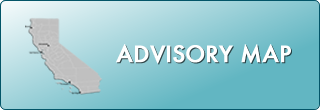Fish Advisory for the All-American Canal Offers Safe Eating Advice for Five Fish Species
FOR IMMEDIATE RELEASE:
SAM DELSON
(916) 324-0955 (O)
(916) 764-0955 (C)
SACRAMENTO – A state fish advisory issued today for the All-American Canal in Imperial County provides safe eating advice for black bass species, Channel Catfish, Common Carp, Flathead Catfish, and sunfish species.
The California Environmental Protection Agency’s Office of Environmental Health Hazard Assessment (OEHHA) developed the recommendations based on the levels of mercury, PCBs, and selenium found in fish caught from the canal.
“Many fish have nutrients that may reduce the risk of heart disease and are excellent sources of protein,” said Dr. Lauren Zeise, director of OEHHA. “By following our guidelines for fish caught in the All-American Canal, people can safely eat fish low in chemical contaminants and enjoy the well-known health benefits of fish consumption.”
The All-American Canal is in southeastern California, near the United States-Mexico border in Imperial County. The canal begins at the Imperial Dam on the Colorado River and runs west for 80 miles, in parallel with the U.S.-Mexico border for much of its course. As the world’s largest irrigation canal, it serves to transport approximately 3.1 million acre-feet of water from the Colorado River to agricultural and urban areas in the Imperial Valley.
When consuming fish from the All-American Canal, women ages 18-49 and children ages 1-17 may safely eat a maximum of four total servings per week of sunfish species, or two servings per week of black bass species, Channel Catfish, Flathead Catfish, or Common Carp.
Women ages 50 and older and men ages 18 and older may safely eat a maximum of five total servings per week of Flathead Catfish, or four servings per week of black bass species or sunfish species, or two servings per week of Channel Catfish or Common Carp.
One serving is an eight-ounce fish fillet, measured prior to cooking, which is roughly the size and thickness of your hand. Children should be given smaller servings. For small fish species, several individual fish may make up a single serving.
For fish species found in the All-American Canal that are not included in this advisory, OEHHA recommends following the statewide advisory for eating fish from California lakes and reservoirs without site-specific advice.
Mercury is a naturally occurring metal that is released into the environment from mining and burning coal. It accumulates in fish in the form of methylmercury, which can damage the brain and nervous system, especially in developing children and fetuses. Because of this, OEHHA provides a separate set of recommendations specifically for children up to age 17, and women of childbearing age (18-49 years).
PCBs (polychlorinated biphenyls) are a group of industrial chemicals. At high levels of exposure, they can cause health problems, including cancer. Although they were banned in the United States in the late 1970s, PCBs persist in the environment from spills, leaks or improper disposal. PCBs accumulate in the skin, fat, and some internal organs of fish. In order to reduce exposure from PCB contaminated fish, OEHHA recommends eating only the skinless fillet (meat) portion of the fish.
Selenium is an essential nutrient present in the environment. However, high-level exposure can cause health problems such as hair loss, gastrointestinal distress, dizziness, and tremors.
Eating fish in amounts slightly greater than the advisory’s recommendations is not likely to cause health problems if it is done occasionally, such as eating fish caught during an annual vacation.
The All-American Canal advisory recommendations join more than 100 other OEHHA advisories that provide site-specific, health-based fish consumption advice for many of the places where people catch and eat fish in California, including lakes, rivers, bays, reservoirs, and the California coast.
The health advisory and eating advice for the All-American Canal – as well as eating guidelines for other fish species and California bodies of water – are available on OEHHA’s Fish Advisories webpage: http://www.oehha.ca.gov/fish/advisories. The All-American Canal poster is available in both English and Spanish.
OEHHA’s mission is to protect and enhance the health of Californians and our state’s environment through scientific evaluations that inform, support and guide regulatory and other actions.
###


